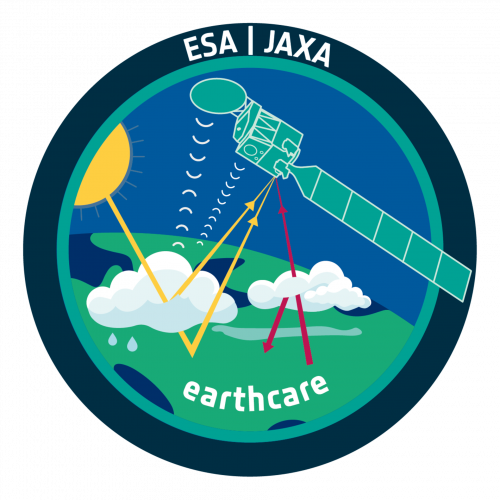National Facilities


On May 28, 2024, at Vandenberg Space Force Base in California, the EarthCARE satellite will be launched into orbit on a SpaceX Falcon 9 rocket. Weighing approximately 2.2 tons, this satellite is a collaborative project between the European Space Agency (ESA) and the Japan Aerospace Exploration Agency (JAXA). Over its estimated three-year lifespan, EarthCARE's sophisticated instruments will collect unprecedented data on the transmission of energy in Earth's atmosphere.
This data will enhance our understanding of how clouds and aerosols—tiny particles in the air that facilitate cloud and precipitation formation—affect Earth's energy budget. Planetary heating and cooling are influenced by clouds and the aerosols that form them. Clouds can reflect solar radiation back into space, causing a cooling effect, while Earth's surfaces, warmed by the sun, emit infrared thermal radiation that is trapped by clouds, creating a warming effect.
The biggest uncertainties in global climate models stem from cloud feedbacks, partly due to the wide variety of cloud types, the challenges of measuring their height and vertical extent, and the difficulty of analyzing the details of individual cloud particles. To address these uncertainties, EarthCARE will provide three-dimensional data to improve the representation of clouds and aerosols in global weather and climate models.
EarthCARE, short for the Earth Cloud Aerosol and Radiation Explorer satellite, has taken 30 years to progress from conception to reality. Ground-based instruments validate satellite sensor data by ensuring that space-based measurements align with observations from the ground, while satellite instruments are valued for offering large-scale, comprehensive views of cloud and aerosol properties.
Figure 1: An artist’s impression of the EarthCARE satellite shows the locations of its four science instruments. CPR is the radar, ATLID is the lidar, MSI is the imager, and BBR is the broadband radiometer. Illustration is courtesy of ESA/ATG medialab, the Netherlands, and the journal Atmospheric Measurement Techniques.
A Suite of Novel Instruments
The EarthCARE satellite is equipped with four specialized instruments on its three-axis, stabilized carbon-fiber platform. These instruments are designed to work together to provide coordinated views of clouds, aerosols, precipitation, and radiative fluxes.
One of these instruments is a high-spectral-resolution atmospheric lidar, which uses laser light pulses to capture detailed vertical profiles of thin clouds and aerosols. It is the first space-borne lidar capable of distinguishing between light scattered by atmospheric molecules and light scattered by aerosols and clouds, allowing for more direct measurements of aerosol properties. Additionally, the EarthCARE lidar can classify different types of aerosols.
The EarthCARE lidar builds on the capabilities of its predecessor, the Cloud-Aerosol Lidar and Infrared Pathfinder Satellite Observation (CALIPSO), which was launched in 2006. Evidence suggests that the EarthCARE lidar will be more effective than CALIPSO at detecting optically thinner clouds, particularly during the daytime, thereby improving the representation of thin clouds like cirrus in climate models.
A second instrument on the platform is a cloud profiling radar, which can penetrate deeper into clouds than the lidar. This radar’s data will partially overlap with that of the lidar, allowing for measurements of the vertical velocities of clouds and the concentration of particles within them, a key factor in cloud reflectivity.
The radar’s disk-like reflector antenna is the largest feature of the EarthCARE satellite, while a kite-like tail of solar panels is located at the satellite’s other end.
The EarthCARE radar will be the first space-borne cloud radar capable of measuring both the vertical extent and motion of clouds. Operating at a frequency of 94 GHz, it shares the same frequency as NASA’s CloudSat.
The third instrument on the carbon-fibre platform is a two-camera multispectral imager. This imager will offer visual context for the lidar and radar measurements by capturing wide-area views up to 150 kilometers (93 miles) across.
Finally, the mission's core focus on planetary energy balance will be addressed by a broadband radiometer. Equipped with three fixed telescopes, this radiometer will measure the solar and thermal radiation reflected and emitted from Earth's surface, atmosphere, and clouds.
ACTRIS – the main Data Calibration and Validation provider for Earthcare
ACTRIS and EarthCARE are closely interconnected. To meet the extensive validation needs of these advanced spaceborne observations, ACTRIS Central Facilities—including the ACTRIS Topical Centres CARS & CCRES and the ACTRIS Data Centre's Unit CLU & ARES—are heavily involved in the real Calibration/Validation campaign. This campaign will begin with the launch of EarthCARE, accompanied by parallel inter-calibration activities with ESA reference lidars and NASA's MPLNET.
The initiative started in 2023 with a rehearsal campaign using simulated EarthCARE overpasses (as shown in Fig. 2) to test the established workflow and identify potential improvements. The rehearsal campaign was implemented within the framework of the ATMO-ACCESS project under the pilot project dedicated to access for international stakeholders. This was done to establish a near-real-time work and data flow, ensuring readiness for immediate validation activities upon EarthCARE's launch.
Figure 2: Simulated overpasses for participating stations within a radius of 100 km around the site as used for the rehearsal campaign.
With the launch now imminent, ACTRIS National Facilities and associated stations are prepared to conduct real quality assurance tests. These tests will be analyzed and approved by the ACTRIS Topical Centres, with data delivered in near-real time from observatories to centralized data processing units. Following preliminary but ad hoc quality control, the data will be made available on the ACTRIS data portal.
ESA's Validation Data Centre (EVDC) will then harvest the metadata of observations collocated with satellite overpasses, providing this data to ESA experts for validation analysis. These efforts include harmonizing data formats and implementing further QA/QC procedures. Additionally, intercalibration efforts with ESA's ground-based reference lidars and NASA's MPLNET will proceed in parallel.
Follow the launch live on 28 May |Watch the EarthCARE launch live on ESA WebTV












